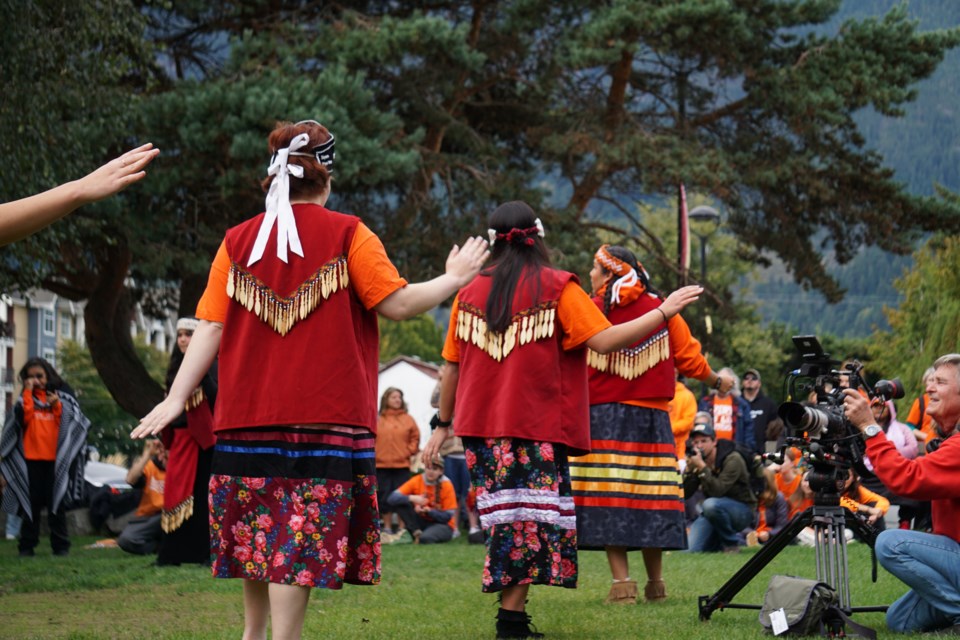Building a future that lasts generations takes time, trust, and a plan. On Saturday, Nov. 2, the Sḵwx̱wú7mesh Úxwumixw (Squamish Nation) will unveil its Úxwumixw 2050 Generational Plan—a vision for the next 25 years aimed at strengthening the Nation's connection to its people, land, and culture.
The event, open to the Sḵwx̱wú7mesh community, will run from 11 a.m. to 3 p.m. at the Chief Joe Mathias Centre in West Vancouver. The plan reflects years of community input and focuses on sustainable growth, self-sufficiency, and governance designed to meet the challenges of the future head-on.
What’s the Plan?
The Úxwumixw (Nation) 2050 Plan builds on the Nation’s long-standing tradition of planning for its people, lands, and communities. This strategy is a community-driven initiative aimed at reconnecting Sḵwx̱wú7mesh People with their traditions, culture, and history while ensuring secure housing, access to healthcare, and strong governance frameworks.
At the core of the plan are four guiding principles– trust, security, purpose and belonging.
In a video shared by the Nation on Facebook on Oct. 15, Mestl’áxwtsJessica Walker—a social worker narrates these four principles as the essential “pillars of a longhouse,” metaphorically supporting the entire structure of the plan and the community’s future.
“Everyone plays a role,” the plan states, “whether as individuals, families, communities, or government.” The vision is to restore connections among the Sḵwx̱wú7mesh People, ensuring future generations thrive on their own terms, backed by cultural knowledge, environmental stewardship, and economic stability.
A Community Vision for 2050
The Sḵwx̱wú7mesh Nation’s long-term vision emphasizes both cultural revival and practical measures to secure the well-being of its people. By 2050, the plan imagines:
-
Housing for all members, accompanied by access to healthcare and social services.
-
Cultural spaces—from longhouses and forests to recreational areas—for people to gather and connect.
-
Reviving the Squamish language, with use by young and old across generations.
-
Economic independence, ending reliance on external funding.
-
Healing journeys that address intergenerational trauma and rebuild trust within the community.
The vision also includes a strong visible cultural presence across the Nation’s territories, with residents and visitors alike learning about the Sḵwx̱wú7mesh People’s history and language.
Reflections on Trust and Unity
“Trust involves openness and understanding between ourselves, our government, and our leaders. We can improve our feelings of trust by strengthening communication, restoring our ability to rely on one another, and holding each other accountable,” Walker said in the video.
The Nation hopes that, within a generation, every member of the Sḵwx̱wú7mesh Nation—whether living in the Squamish Valley, on the North Shore, or abroad—would feel connected through trust. “It truly is a collective effort where everyone in our community has a part to play—from our government and departments to the many families, neighbourhoods, and each of us as individuals,” Walker said.
"We can strengthen our feeling of trust with our values of Siám (honour) and Wánám (respect). By acting and showing respect to all our relations out of love and good intentions, we honour our connections to each other and the land,” she said.
A Process Rooted in Tradition and Community Input
The Generational Plan idea came from the Nation’s 2020-2023 Strategic Plan, which called for a long-term vision shaped by community input. To help achieve this, the council added a plan for future projects in 2021. This work also ties into the Nation’s 2022 to 2026 goals and strategies for land development. The planning process follows three main phases:
-
Phase 1: Where Have We Been & Where Are We Now?
A comprehensive review of the Nation’s past and current strategies, identifying the progress made so far.
-
Phase 2: Where Do We Want to Go?
Community members were asked to share their hopes, fears, and dreams for the future, helping shape the long-term goals of the plan.
-
Phase 3: How Will We Get There?
The development of specific strategies and action plans, with staff and community leaders working together to identify priorities and “easy wins” alongside long-term objectives.
Attendees will have the chance to connect with leaders, explore the plan’s details, and learn how they can contribute to bringing this vision to life. For more information, visit https://www.squamish2050.net/.
Note: The Squamish Chief has contacted the Sḵwx̱wú7mesh Nation for additional comments and will update the story upon receiving a response.
Bhagyashree Chatterjee is The Squamish Chief’s Indigenous affairs reporter. This reporting beat is made possible by the Local Journalism Initiative.



